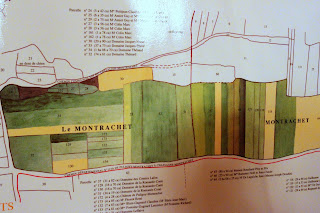Aged Meursault - how old is too old?

Most wines don't age well - they just decline, especially white. White Burgundy, on the other hand, particularly 1er and Grand Cru actually needs a few years to hit its stride. Meursault, one of the great Chardonnay villages in the world, one whose grandeur and style was the target of the legendary pioneers of California wine industry in the 1970's, such as Mike Grgich and Chateau Montelena, gives greater pleasure as it gains in maturity. But how long should you wait? And how long is too long? From the mailer by Ross Bott, the organizer: Meursault is in the geographic center of the Cotes du Beaune region of Burgundy, with Pommard two kilometers to the north and Puligny Montrachet two kilometers to the south. It totals just under a thousand acres of planted vines, almost all Chardonnay. About 200,000 cases of wines are produced each year, of which 98% are white. The vineyards of Meursault itself surround the town, with the premier cru vineyards just to the southwest and the re






